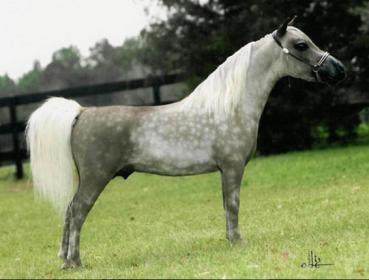Horse colors is a complex, genetic minefield. Unless you are specifically breeding for color, it really doesn’t matter what color your horse is. That said, I notice (a lot frequently, it seems) in sales ads, people are often getting the color wrong. I saw one today that was marked “buckskin.” Um, no, that’s a bay roan. I saw another that was marked “silver dapple.” No, that’s a dapple gray. Silver dapple is a brown horse with silver mane and tail (and several variations on that theme). I saw another that said “blue roan.” No, it was a bay roan. And another marked “bay roan” that was a red roan. For heaven’s sake, how can you not know what color your horse is?
I’ve seen some horses in person that appeared black, but genetically they are liver chestnut. I know it can be hard to call sometimes without testing (which if you are not breeding for color is a waste of time and money, IMO). Smutty palomino (I’m riding one currently) is not the same thing as chocolate palomino. And so on. Don’t know why I’m ranting, just because getting the color wrong in an ad is just another peeve, I suppose. It makes me wonder what else about their horse that they are selling that they don’t know.




 My vet wrote down “dark bay” on my mare’s last Coggins. I pointed out that she’s actually brown. His response? “Does it bother you enough to pay for new test to correct her color on the form?” My response? “That sure is a nice dark bay horse I have!” Hee hee!
My vet wrote down “dark bay” on my mare’s last Coggins. I pointed out that she’s actually brown. His response? “Does it bother you enough to pay for new test to correct her color on the form?” My response? “That sure is a nice dark bay horse I have!” Hee hee!